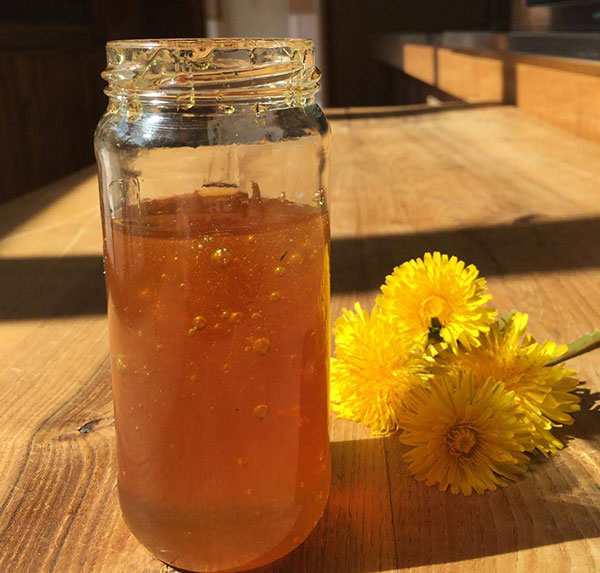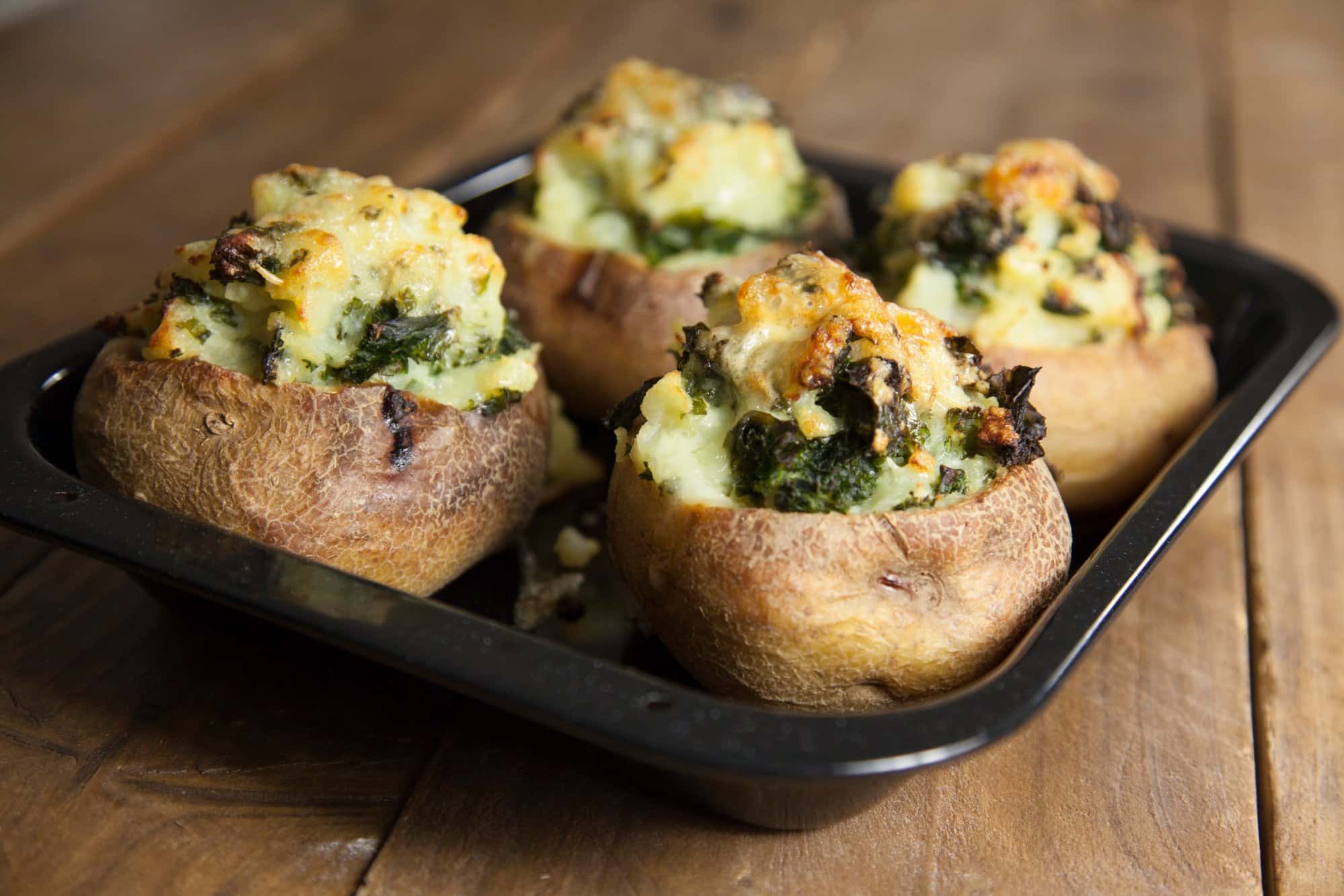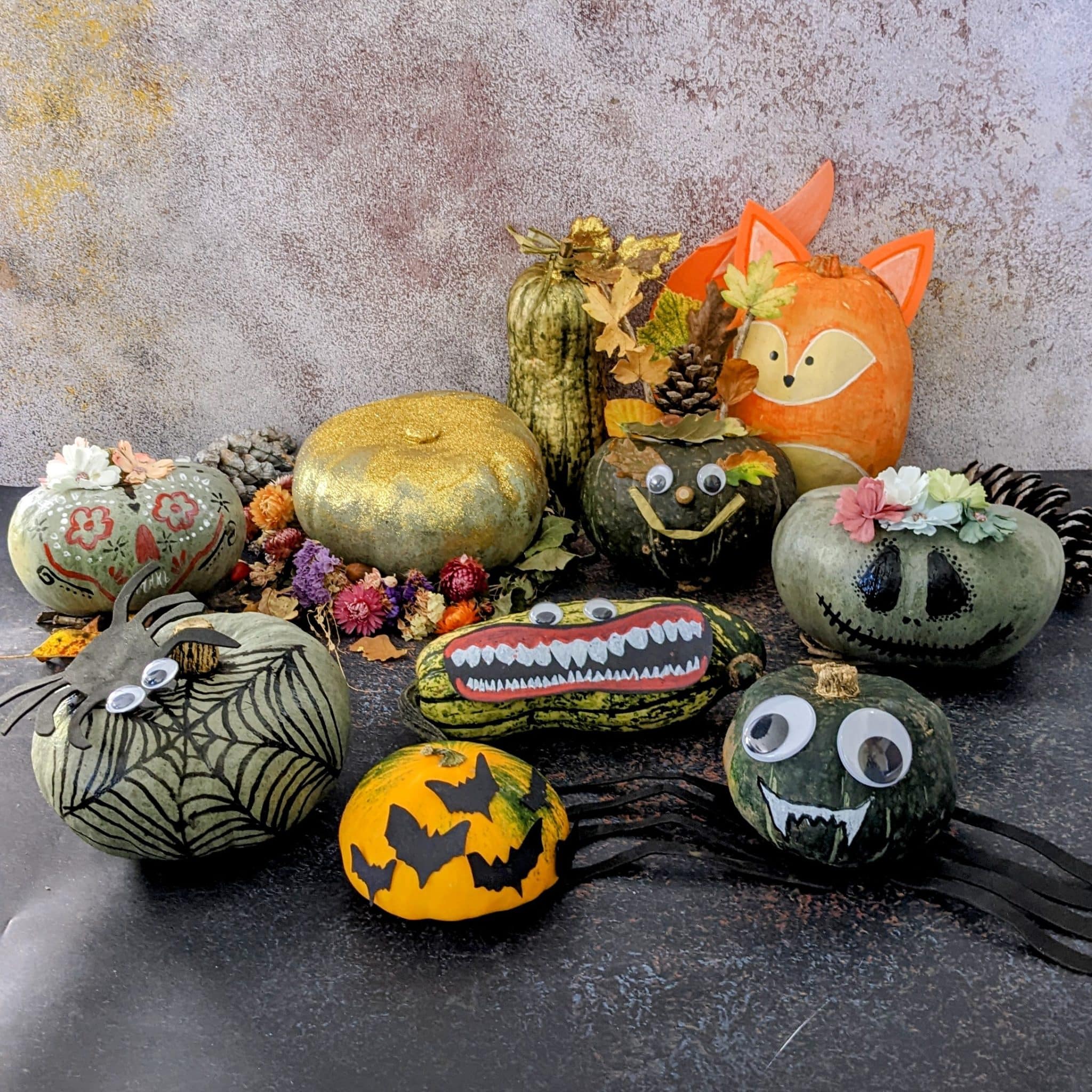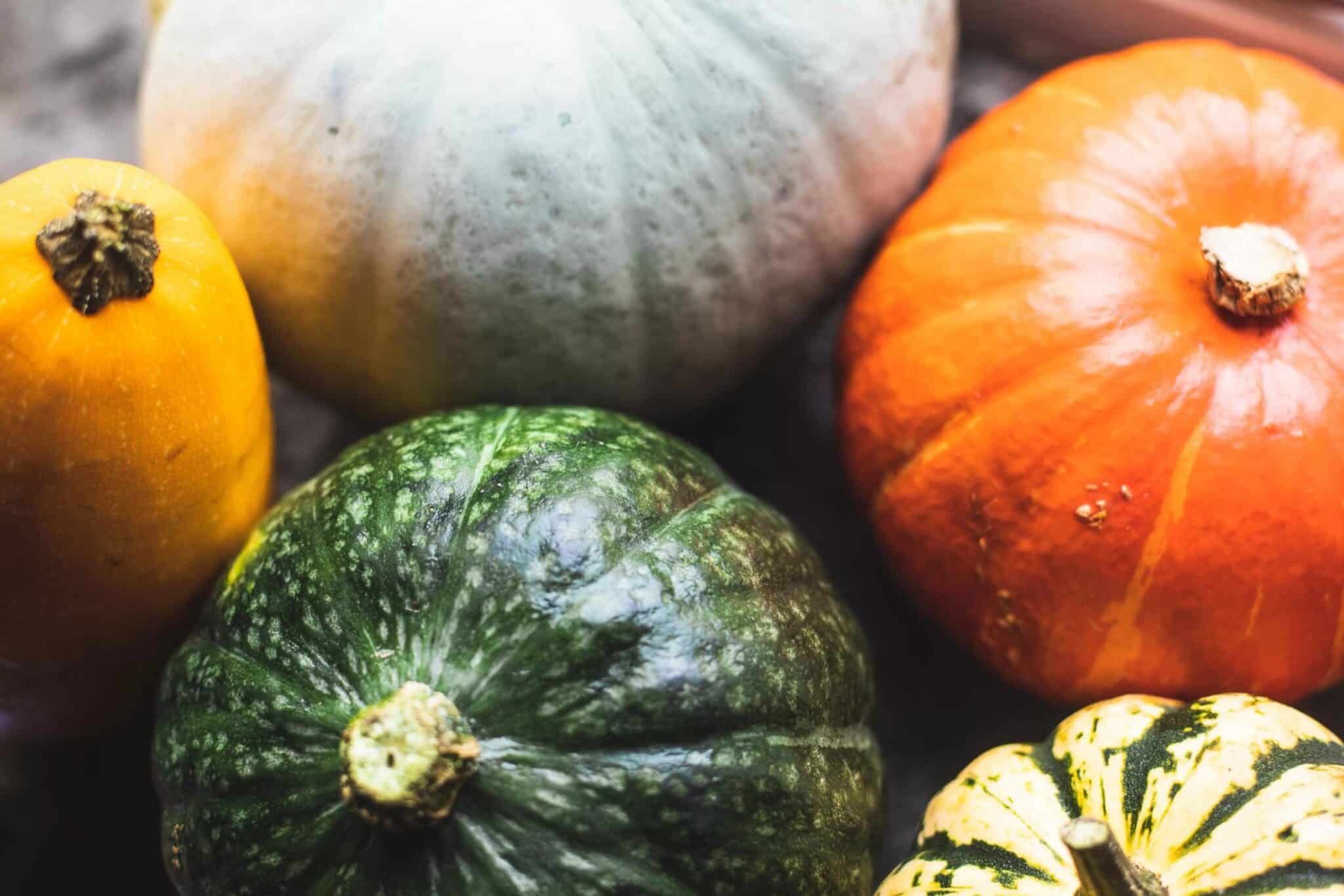With a little curiosity and a few simple recipes, you can transform even the most everyday plants and turn daily walks into culinary forage adventures.
Vegan dandelion ‘honey’
Ingredients:
560g sugar
3 slices of lemon
60g picked dandelion petals
We use golden caster sugar, but you could use granulated. Any darker sugars like muscavado or light brown sugar will make it a darker colour, while jam sugar may alter how it sets.

Method:
– Soak petals in water for 10 minutes for bugs to leave.
– Strain then simmer for half an hour with lemon and just enough water to cover the dandelion.
– Then steep for 6 hours.
– Strain through muslin and cook gently for up to a few hours slowly adding the sugar.
– Keep checking the consistency on a cold spoon or plate in fridge as it will stay watery when hot.
Rosemary-infused honey
I mix this delicious rosemary-infused honey with wholegrain mustard and use it to marinate whole-roasted carrots, or drizzle it over a crumpet with poached rhubarb – a surprisingly good combo.

You can eat the tiny purple blossoms that appear on rosemary plants as it blooms: they have a mild, delicate flavour making them perfect to add a subtle hint to honey.
To switch it up, you can also infuse with other ingredients such as lilac, lavender, lemon thyme, elderflower, garlic, geranium, blackcurrant leaves.
Method:
– Fill a jar with rosemary flowers and pour in honey (use traditional shop-bought honey or your own vegan version) until it completely covers the blossom: the honey will settle for a bit and the blossom will soon float to the top.
– Cap your jar and leave to infuse for a few days to a few weeks, turning every now and then to keep them coated.
– When you’re ready to use the honey scoop out the mass of flowers from the top and drizzle over your plate of food.
Use to rub over hams, a roast lamb leg or a bowl of strawberries and yoghurt.
Nettle pesto and cordial
We use nettles a lot in the Field Kitchen as they are a very nutritious food and particularly high in vitamins A and C, iron, potassium, manganese, and calcium. They are also very easy to identify and shouldn’t be hard to find! Now is a good time to start picking – it’s the young tender shoots at the top of the plant you want before they flower and set seed.
Make sure you wear gloves to avoid getting stung but once cooked, the sting goes and you can use like any other green.

For the pesto:
200g nettle leaves/tops
2 ltrs boiling water
150ml olive oil
50g pine nuts, sunflower seeds or hazelnuts
1 lemon juice and zest
1 garlic clove

To make:
– Wash the nettle leaves in cold water (still wearing gloves) to remove dirt or insects. Then add the washed nettle to a pan of boiling water for 2-3 minutes.
– Strain the nettles but make sure to reserve the nettle tea.
– Squeeze the water from the leaves and place in a blender with the other ingredients. Depending on how you like your pesto you can blend until completely smooth or leave chunkier.
– Season with salt. You can keep in fridge for a couple of weeks.
For the cordial:
800g sugar
1ltr nettle tea
1 lemon sliced
To make:
– Place all ingredients in a pan and boil for 2 minutes until all the sugar has dissolved.
– Pour into a bottle and it can be stored in the fridge for months.
For more foodie tips and inspiration, follow the Riverford Field Kitchen on Instagram.















I’m diabetic too much sugar will send me into outer space!!!
560 grms of added sugar? Are you serious, given the link to cancer?
You can always replace sugar with an alternative like Xylitol. It actually helps the teeth and in small quantities (in larger you may have some stomach discomfort as it’s an alcohol and difficult to break down) it’s totally fine for you!
Hi rodrigo – think you might need to read this:
https://scienceblog.cancerresearchuk.org/2017/05/15/sugar-and-cancer-what-you-need-to-know/
The good thing about science is that unlike religion it’s still true whether you believe in it or not 😉
https://scienceblog.cancerresearchuk.org/2017/05/15/sugar-and-cancer-what-you-need-to-know/
Just read that link and it says that obesity has a strong link with cancer… but also:
“And a study published in 2019 suggested there could be something else going on. Researchers found that people who drank more sugary drinks had a slightly increased risk of cancer, regardless of body weight. The study took weight in to account, but there are still lots of answered questions. More studies will be needed to investigate this.”
All I know is that I feel crap if I have a lot of sugar.
People who consume more sugary drinks might also be e.g. lower income / less educated / more extrovert / have a less healthy diet etc etc. , In other words, you can’t assume that the sugar intake was a single causative factor.
I would not keep any of these items for more than two days due to a high risk of botulism. The recipe for pesto recommends keeping it for longer than a properly processed commercial version, which would not be kept safely longer than three days due to a high risk of food poisoning. Sadly chefs do not have enough training in the dangers of food poisoning when storing foraged foods!
Hi KarenLizzie thanks for your comment, I have checked with Lewis about this and he wanted to explain a little more about this: “Please rest assured we all have a very high level of training. In the restaurant we are of course extremely careful and make everything fresh from scratch each day as we only cook for the amount of people booked to ensure there is no food waste..This recipe is for those at home, and the use by is a guideline. We do a lot of foraging, and work closely with professional forager Stuart Woodman. Commercially produced pesto has a two week ‘use within’ recommendation and contains dairy- this is a dairy-free recipe”.
Where is the elderflower vinegar recipe please?
Hi Ann, hope you really enjoy this Elderflower vinegar recipe:
The delicate, floral flavour of elderflower adds freshness and a lightness to many dishes and it’s a great way to preserve the flavour.
From about mid-May, so now, you will see masses of tiny white flowers in woods and hedgerows and they are best picked when the buds are freshly open on a warm sunny day.
We like to use our elderflower vinegar in dressings, but it’s also particularly good with asparagus, courgettes and shaved fennel. You’ll need:
1l white wine vinegar
8 heads of elderflower
Pour the vinegar into a sterilised jar and push in the elderflower making sure its submerged.
Seal and leave to infuse for a week.
After a week strain the vinegar off, bottle it and it’s ready to use.
Thank you to Lewis at The Riverford Field Kitchen for this recipe.
#LiveLifeontheVeg